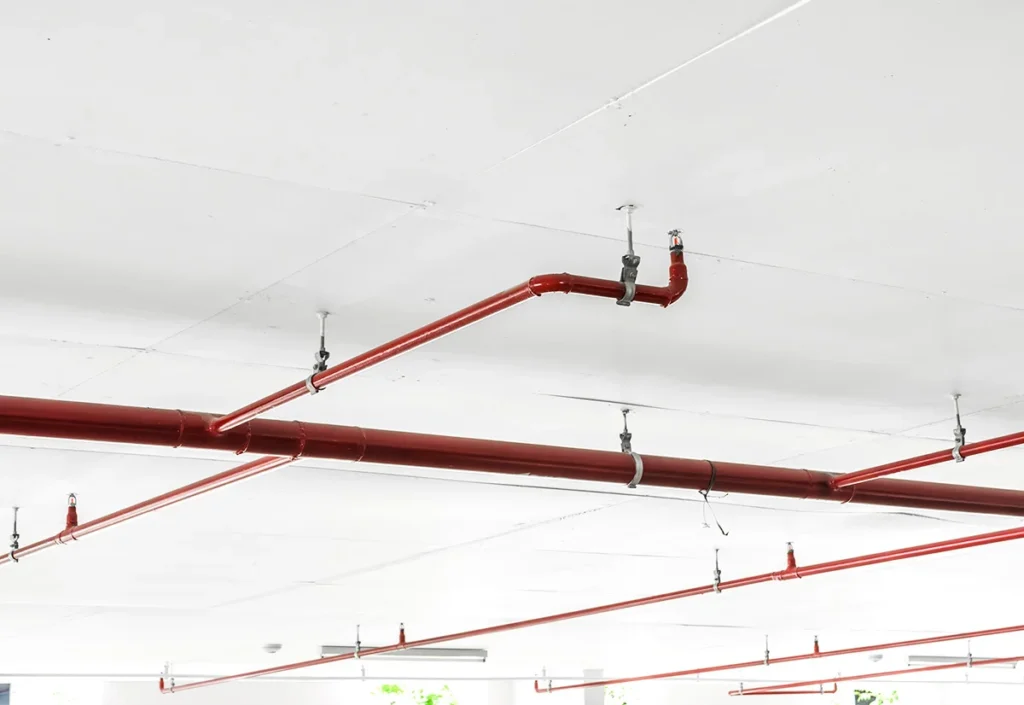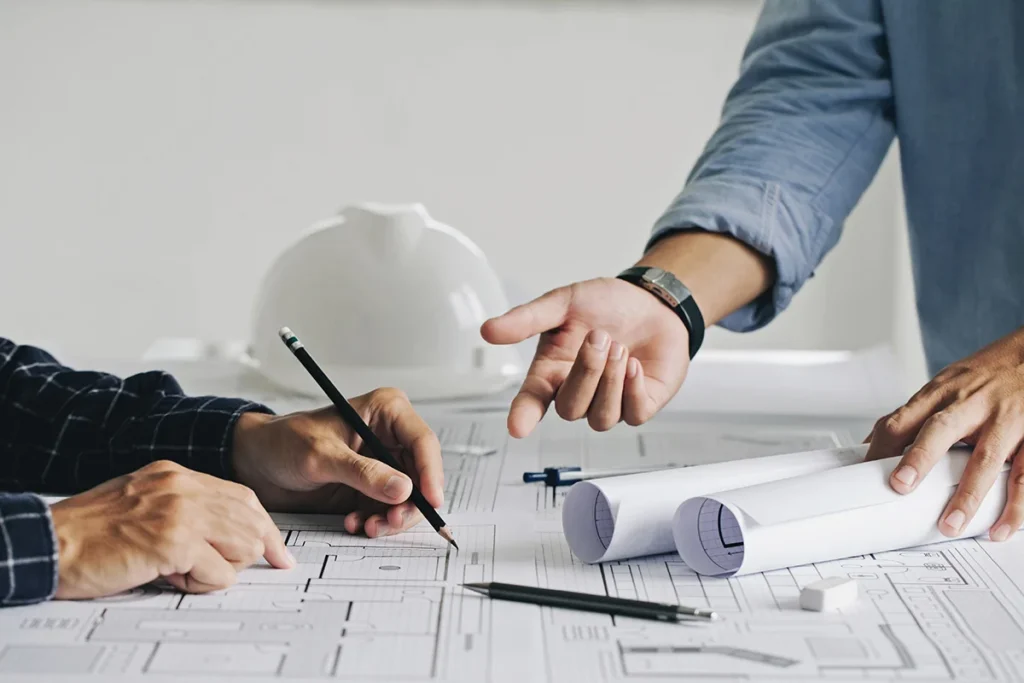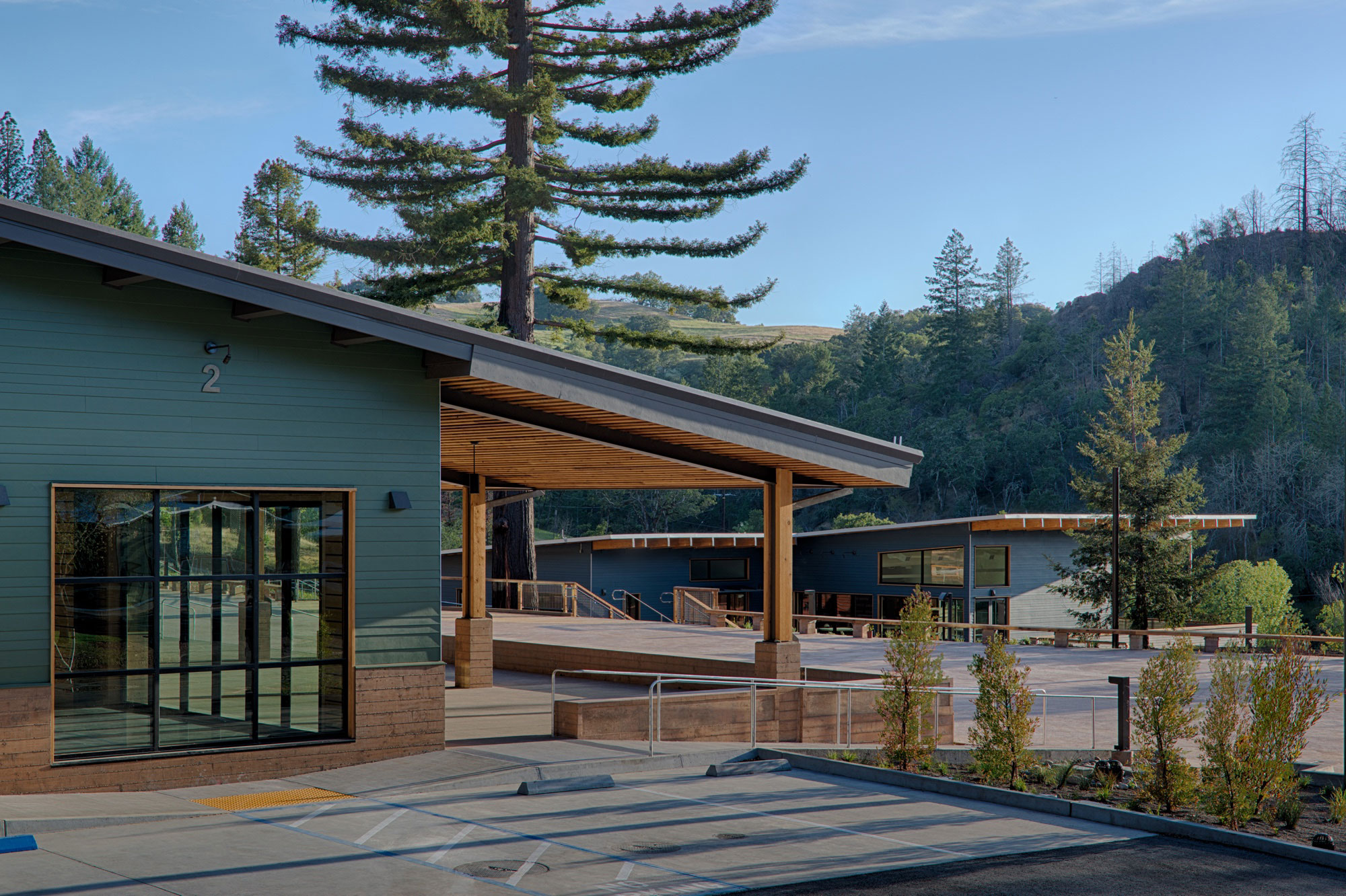Commercial Building Design Ideas for Wildfire Resistance
May 1, 2025 Commercial ConstructionThis article explores commercial building design ideas to improve wildfire resistance.

How to Design a Fire-Resistant Commercial Building
Wildfires pose a growing threat to commercial properties across the country. According to the U.S. Fire Administration (USFA), there were 110,000 nonresidential fires in 2023 alone, resulting in over $3.1 billion in financial loss.1 And with a 19% increase in fires over the past 10 years, these numbers are only expected to rise.
Wildfire resistance should never be an afterthought, especially when starting a commercial construction project. By proactively implementing the right strategies in the design phase, you can significantly improve the resilience of both your property and your business.
Below, we explore commercial building design ideas to enhance the wildfire resistance of your next construction project.
Active vs. Passive Fire Protection (AFP, PFP)
Before we dive into specific design ideas for wildfire resistance, it’s important to understand the difference between active and passive fire protection:
- Active Fire Protection (AFP): A fire protection system installed inside a building that requires a trigger (manual or automatic) to work.
- Passive Fire Protection (PFP): Built-in features that help contain or slow the spread of fire without requiring activation.
During construction, you will need to implement a mix of both active and passive fire protection throughout your building to maximize its wildfire resistance.
Class A vs. Class B Fires
It’s also important to understand the different types of fires, since some environments may require different suppression systems than others:
- Class A: Started with solid combustible materials like wood, paper, cloth, and certain plastics. Water is used to suppress a Class A fire.
- Class B: Started with alcohol, gasoline, grease, or other flammable liquids. Water should never be used to suppress a Class B fire, which can cause these liquids to spread even further. Foam suppression systems typically work best.
By considering these different fire classes, you can equip your commercial building with the proper suppression systems and boost its wildfire resistance.
Active Fire Protection (AFP) Design Ideas

Below are some active fire protection (AFP) design ideas for making your commercial building more wildfire resistant.
Install Fire Sprinklers and Suppression Systems
Sometimes one ember from a wildfire is all it takes for a material to ignite. Adding fire sprinklers and suppression systems to your building’s design can help minimize a fire before it worsens or spreads:
- Automatic fire sprinklers detect heat and activate instantly to help slow a Class A fire using water.
- Foam-based suppression systems help smother Class B fires involving flammable liquids.
If an environment is at risk for both fire classes, it’s a good idea to install multiple types of suppression systems just to be safe. Specific industry requirements and local fire regulations may affect which suppression systems your building needs.
Install Strategic Water Storage Points
Installing water storage at strategic points around your commercial building can give firefighting teams easier access to water during an emergency:
- On-site water storage tanks provide a backup supply for fire sprinklers and hose connections.
- Dedicated fire hydrants ensure quick access to water for firefighters.
- Standpipe systems are vertical piping networks installed in multi-story commercial buildings that help firefighters access water.
- Rainwater collection systems provide an additional water reserve to supplement fire suppression efforts.
This is especially important in drought-prone areas where access to water is limited.
Passive Fire Protection (PFP) Design Ideas

Below are some passive fire protection design ideas for your commercial construction project.
Use Pre-Engineered Metal Buildings (PEMBs)
Pre-engineered metal buildings (PEMBs) are highly durable and fire-resistant structures commonly used in commercial construction. They are made from noncombustible materials like steel, which means they can withstand extreme heat and won’t ignite in the event of a fire. This can help slow fire spread because it limits the amount of combustible materials on your property.
Establish Defensible Spaces Around the Building
A defensible space is a buffer zone that limits flammable materials around a building to reduce fire spread. Here are some ideas for designing your commercial building with defensible spaces:
- Clearance Zones: Around the building, include clearance zones of 30-100 feet without vegetation or combustible materials that could potentially ignite.
- Landscaping: Incorporate fire-resistant landscaping design with gravel, concrete, and fire-resilient plants.
- Hardscaping: Use hardscaping features like paved pathways and retaining walls to create firebreaks.
Specific requirements for defensible space may vary depending on local laws and regulations.
Choose Fire-Resistant Roofing and Siding Materials
No building can be entirely fireproof, but choosing fire-resistant roofing and siding materials can make the building less likely to ignite and reduce the risk of fire spread. Metal, concrete, and tile roofs are highly resistant to embers compared to asphalt or wood shingles. Noncombustible siding like fiber, cement, stucco, or stone veneer is also fire-resistant.
Install Fire-Resistant Doors and Windows
Another way to make your commercial building more resilient is to install fire-resistant doors and windows:
- Tempered glass windows are up to four times stronger than traditional glass windows and withstand more heat.2
- Fire-rated metal doors help contain smoke and control the spread of flames.
- Metal shutters or ember-resistant mesh screens help block airborne embers.
Design Your Commercial Building for Wildfire Resistance With FDC
Wildfires are a growing concern for homes and businesses across the country. By making proactive design choices for your commercial construction project, you can make your building more resistant to wildfires and significantly reduce risks.
At Facility Development Company (FDC), we have years of experience designing and building commercial buildings across a broad range of industries—from wineries and breweries to commercial kitchens and more. We approach every project with quality, durability, and safety in mind.
Ready to make your vision become reality? Entrust your project to the experts and contact us online or call (707) 523-1722 to get in touch today.
References
- Nonresidential fire estimate summaries (2014-2023). (n.d.). U.S. Fire Administration. https://www.usfa.fema.gov/statistics/nonresidential-fires/
- Fact or fiction: Upgrade to tempered glass whenever possible. (n.d.). Glass Doctor. https://glassdoctor.com/blog/fact-or-fiction-upgrade-to-tempered-glass-whenever-possible
